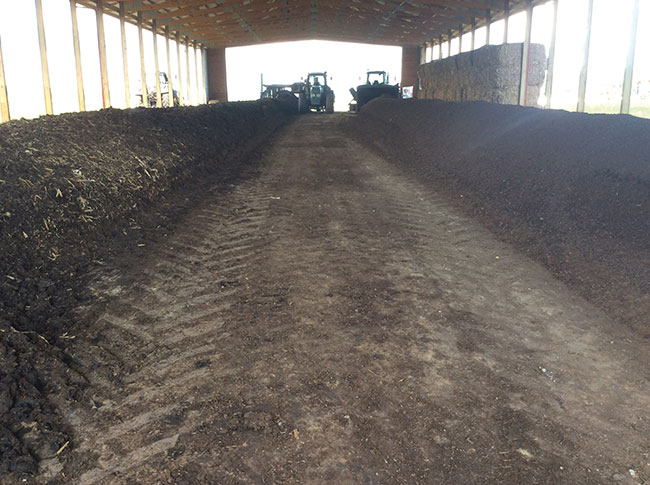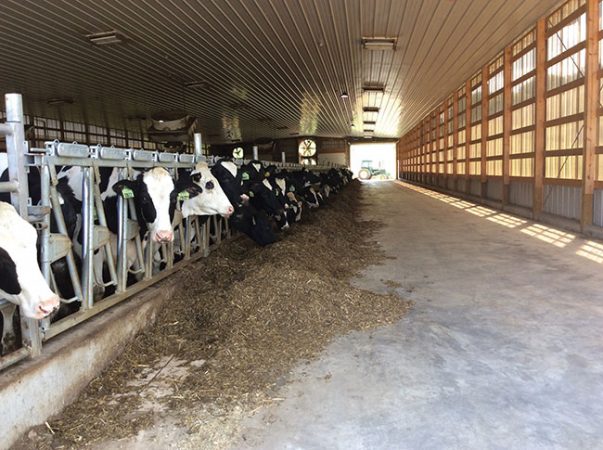
Features
Sustainability
Focus on the future: becoming sustainable
As the global food industry turns more toward sustainable sourcing initiatives, environmentally minded farm plans are growing in popularity.
October 7, 2019 by Treena Hein
 In Canada and the United States, voluntary programs can help determine environmental risks.
In Canada and the United States, voluntary programs can help determine environmental risks. Sustainable sourcing is becoming increasingly important these days to companies of all types around the world, but it’s particularly growing in popularity within the food industry.
The concept of sustainable sourcing involves buying goods from suppliers that can demonstrate they are following sustainable practices relating to the social, economic and environmental aspects of the production and distribution of their products. Environmental criteria in sourcing initiatives encompass soil stewardship, proper nutrient management and crop production product use, biodiversity and water enhancement and protection.
These are all things that the Environmental Farm Plan (EFP) in Canada addresses, as do similar programs in the USA. In both countries, these programs are mostly voluntary self-assessments of a farm or ranch to determine environmental risks and the development of an action plan to reduce the identified risks. To implement the plan, some cost-sharing funding for select projects is provided.
The sustainable agriculture initiative
“We are heading into an era where being part of a sustainability program and being able to demonstrate that you meet sustainability benchmarks is a standard part of doing business,” notes Paul Watson, EFP director at the Agricultural Research and Extension Council of Alberta (ARECA) and national co-chair for EFP harmonization across the Canadian provinces.
In Canada, EFP personnel in Quebec have already started the process of making its EFP equivalent to the Sustainable Agriculture Initiative (SAI)’s Farmer Sustainability Assessment. Saskatchewan and Alberta are following suit and all other provinces are expected to do so as well. The SAI is used in 32 countries and has dozens of members, many of which are global food industry players, such as Unilever, Nestle, McDonald’s and McCains.
Getting the EFP to be recognized by the SAI is important, Watson says, because it’s a widely used and recognized global program that has been benchmarked against other sustainability tools.
Outside of the SAI, John Neufeld, communications manager at Manitoba Agriculture, notes that there are certain commodities in that province that are also utilizing the assessment of the EFP for their sustainable sourcing requirements. Watson says commodity purchasers in Alberta have also expressed interest in a similar path, and the Saskatchewan Ministry of Agriculture says the organization is looking at integrating sustainable sourcing requirements into their supply chain. Nationally, the environmental aspect of the Dairy Farmers of Canada’s proAction program is based on the EFP and implementation of this will start in September 2021.
Watson notes the EFP’s long use has positioned Canadian farmers well with regards to sustainability, and while he can only specifically speak about the Alberta EFP, he believes having it recognized through the SAI will mostly be a matter of participants adding a little documentation.
EFP manure cost-sharing programs in some provinces
Not only does participation in an EFP or in similar programs in the United States allow livestock producers to be part of sustainable-sourcing supply chains, it also reduces environmental risks associated with manure storage and application on their farms – and saves them money.
Improved manure storages, for example, should result in less wear and tear on equipment, explain representatives of Alberta Agriculture and Forestry (AAF). Relocating a poorly placed livestock facility provides benefits such as improved herd health, improved water quality, reduced stream bank degradation, improved riparian function and improved public perception. In addition, relocations or improvements in pen floor liners will result in reduced maintenance and easier manure haul-out, easier accessibility of site for loading and unloading cattle, and better positioning for future production and expansion.

In Saskatchewan, livestock producers are not required to submit an Environmental Farm Plan to receiving funding for manure-related projects under a new funding arm of the Farm Stewardship program. Photo by Manure Manager.
Current programs and initiatives
There are several current projects supported through cost sharing under the Environmental Farm Plan across the Canadian prairies, and similar programs in the United States.
In Alberta, EFP cost-sharing projects include the conversion of existing manure-application equipment to surface banding or injection delivery systems, use of vertical spreader assemblies and main/booster pumps for dragline systems (must include an automatic shut off feature). Projects also include the use of in-field temporary manure storage systems (fillable bags or bladders for dragline systems), compost turners and directional drilling for dragline systems (culvert under or pipes over).
In Manitoba, there are two manure-related projects available for cost sharing to farmers with a valid EFP, both for reduction of liquid manure storage odor and barn odor. There is another stream of activities, according to John Neufeld at Manitoba Ag, for custom service providers related to direct manure injection and in-season manure application.
In Saskatchewan, livestock producers are no longer required to submit an EFP to receive funding for manure-related projects under the Livestock Stewardship BMP [best management practice] funding arm of the Farm Stewardship Program (as part of the Canadian Agricultural Partnership). Ministry staff members conduct environmental risk assessments of each project funded to ensure the project will adequately mitigate the environmental concern. The BMP for improved manure storage includes cost sharing for concrete or clay pads for storing solid manure or improved structures to store liquid manure such as tanks or an engineered earthen manure storage system. There is also cost-sharing for relocation of livestock facilities or implementation of runoff controls works to improve or protect surface water. There is no funding for improved manure application equipment at this time.
In the USA, the U.S. Department of Agriculture (USDA) National Institute of Food and Agriculture (NIFA) has many programs that support farmers to better manage manure. In addition, the USDA’s Natural Resources Conservation Service offers funding for voluntary projects through three sources: the Environmental Quality Incentives Program (EQIP), the Conservation Stewardship Program (CSP) and the Regional Conservation Partnership Program (RCPP). NRCS also offers competitive Conservation Innovation Grants to eligible grantees willing to work with EQIP-eligible producers to showcase innovative natural resource techniques, including new and creative ways to address manure management.
Before eligible livestock producers can access NRCS funding programs to addres identified natural resource challenges, they must start with a conservation plan and then work with NRCS conservation planners to secure funding to support the activities outlined in the plan. The producer then signs a contract with NRCS to carry out those activities. In 2018, NRCS entered into nearly 9,000 contracts with producers for a total of $429 million to treat about 2.4 million acres. These voluntary manure management projects are widely diverse, and include different ways of storing and handing manure, improved waste storage facilities, roofs and covers, protection of areas of heavy use and building or improving waste treatment and waste separation facilities.
NRCS funding generally helps producers cover between 75 and 90 percent of the cost (based on typical payment rates) to adopt a conservation practice. In addition, eligible historically underserved, new, tribal and veteran farmers or ranchers can receive additional assistance, such as advance payments.
Resource roundup
- Manitoba Environmental Farm Plan
- Alberta Environmental Farm Plan
- Saskatchewan Environmental Farm Plan
- Ontario Environmental Farm Plan
- USA
- The Natural Resources Conservation Service encourages livestock producers to visit their local U.S. Department of Agriculture (USDA) service center and speak to its staff about specific natural resource concerns. Livestock producers also can visit USDA’s mobile-friendly website, www.farmers.gov, to view and apply for program assistance.